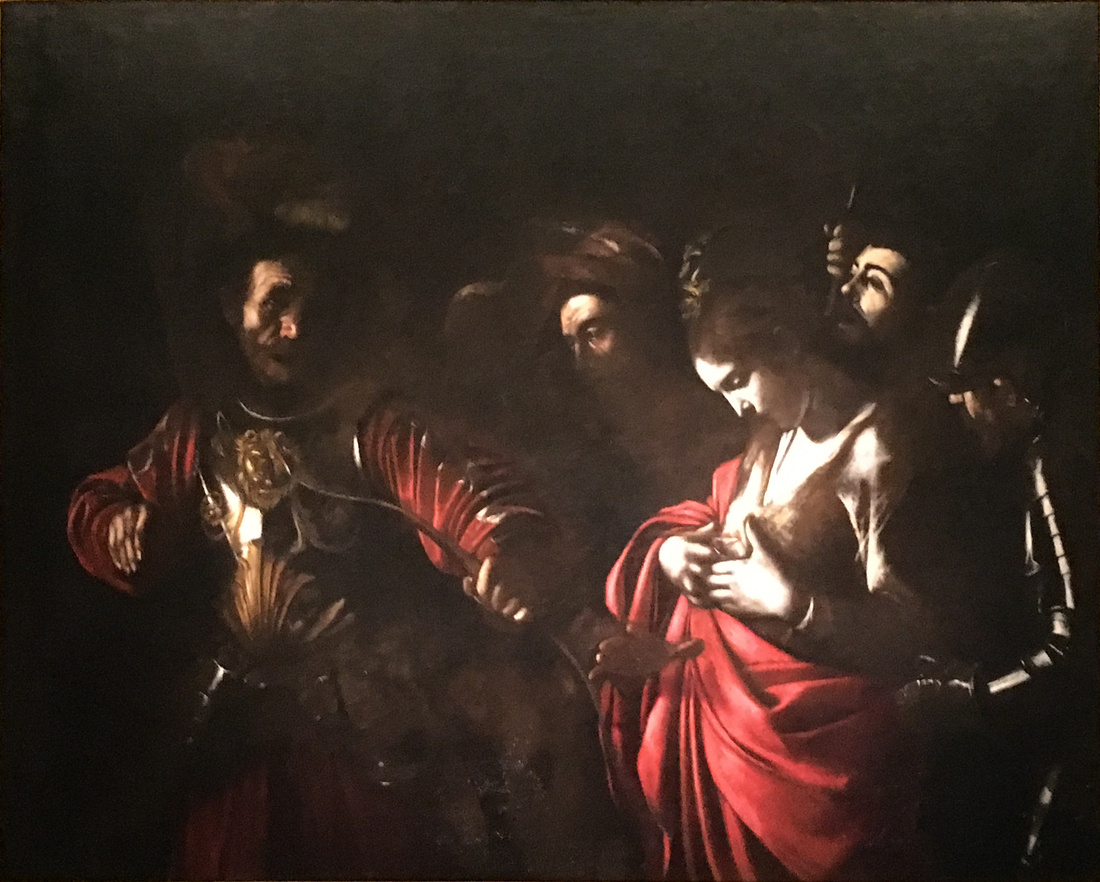What Caravaggio’s Last Paintings Reveal about His Tumultuous Final Days
 Caravaggio, The Denial of Saint Peter, 1610. Courtesy of the Metropolitan Museum of Art
Caravaggio, The Denial of Saint Peter, 1610. Courtesy of the Metropolitan Museum of Art
No one is quite sure how Caravaggio died. Perhaps, as researchers suggested in 2010, it was lead poisoning from oil paint. Perhaps, as another scholar claimed in 2012, he was murdered by a vengeful contingent of the Knights of Malta. Or perhaps it was simply heat exhaustion that pushed the already-wounded artist over the edge.
What no one disputes is that, in the years leading up to his untimely death, Caravaggio’s work underwent a transformation. And according to Keith Christiansen, chairman of the European painting department at the Metropolitan Museum of Art, those changes distilled the painter’s genius even further.
Christiansen encouraged the Met’s 1997 purchase of The Denial of Saint Peter (1610), Caravaggio’s penultimate painting. “It was then my conviction, and has been increasingly so, that Caravaggio's most moving and profound works” were created during the artist’s final years in exile from Rome, Christiansen said, during a lecture at the Met earlier this month.
Caravaggio did not leave the city of his own accord. A brawler with a temper, he had been known to prowl the streets with a pack of painters and swordsmen, looking for trouble. But this mischief-making turned criminal on May 28, 1606, when Caravaggio killed a man named Ranuccio Tomassoni during a gang fight. The artist had always claimed friends in high places, but this time they couldn’t clear his name (at least, not right away). Rather than face capital punishment, he slipped away from Rome.
As he traveled across Italy—from Naples to Malta, then Sicily, and back again to Naples—Caravaggio’s style began to shift. His late paintings (“late” being a relative term, since the artist died at 38) revel in a “darkness that's more complete, more total, more absorbing of light than what he had done earlier in the much brighter Roman paintings,” said University of Delaware art history professor David M. Stone.
All the while, Caravaggio was working to secure a papal pardon and return to Rome. Yet his unchecked aggression undermined him at every turn—after completing the year of training necessary to join the Order of Malta, Caravaggio got into a scuffle and managed to seriously injure one of its member knights. Instead of a pardon, he fled the town with his criminal record doubled.
Caravaggio never made it back to Rome. He painted his final two works during his return visit to Naples—both of which are currently on display in the Met’s succinctly named exhibition “Caravaggio’s Last Two Paintings.” Stone noted that these works are characterized by their almost claustrophobic framing. “When you get to the second Naples period, the space is practically gone,” he said. “There's these huge close-ups, you're right there with him. He really changes the position of his lens.”
The Denial of Saint Peter is a part of the museum’s permanent collection. Yet, for centuries following Caravaggio’s death, no historian knew it existed. It wasn’t until the aftermath of World War II, when an antiques dealer sold the painting as an anonymous work to a Neapolitan collector, that it caught the interest of scholars. Even then, it took years of restoration before the work was acknowledged as a genuine Caravaggio.
 Caravaggio, The Martyrdom of Saint Ursula, 1610. Image via Wikimedia Commons.
Caravaggio, The Martyrdom of Saint Ursula, 1610. Image via Wikimedia Commons.
As in many of his later paintings, the subject matter is as dark as the paint itself. Caravaggio depicts St. Peter refusing to acknowledge his connection to Jesus and “realizing, at the same moment, that he's said something he can't take back,” Christiansen said. “It’s this real psychological moment that’s very particular to Caravaggio at this stage.”
(As further testament to its brooding sensibilities, the work features prominently in an episode of the post-apocalyptic, zombie-laden television show The Walking Dead.)
At the Met, The Denial of Saint Peter is coupled with Caravaggio’s final painting: The Martyrdom of Saint Ursula (1610). This, too, conveys a story of remorse. Legend has it that St. Ursula traveled to Cologne with a band of 11,000 virgins, all of whom were slaughtered by the Huns laying siege to the city. Ursula was spared when the leader of the Huns fell in love with her—until she spurned his advances, and he shot her through the heart. The man’s look of stunned regret as he realizes what he has done is palpable.
It was a look Caravaggio would have understood all too well.
—Abigail Cain


No comments:
Post a Comment